Today, we’re looking at another cool tabletop roleplaying game by R. Talsorian Games: The Witcher. Set in the timeline between the events of The Witcher II and III video games, a group of bards, merchants, mages, mercenaries, and yes maybe even a Witcher will band together for adventure and coin. A morally grey setting that will be immediately familiar to anyone who’s played one of the video games or watched any of the Netflix shows. Much like my review of Cyberpunk RED, I’ll say up front that this is a fantastic system I’m also very much in love with. As for the why this time, however, we’re doing things a little differently.
When I review a game I’m always thinking of who it will suit, and I try to convey this through a look into the rules, theme, and unique consideration with which these games are made. There is a giant, though, looming from the horizon over everything here, a consideration I hear voiced in questions over and over. And I think, for our look into The Witcher, we need to look at things specifically through this lens. Specifically, it’s what I’m thinking when folks start their questions with:
I love Dungeons & Dragons, but…
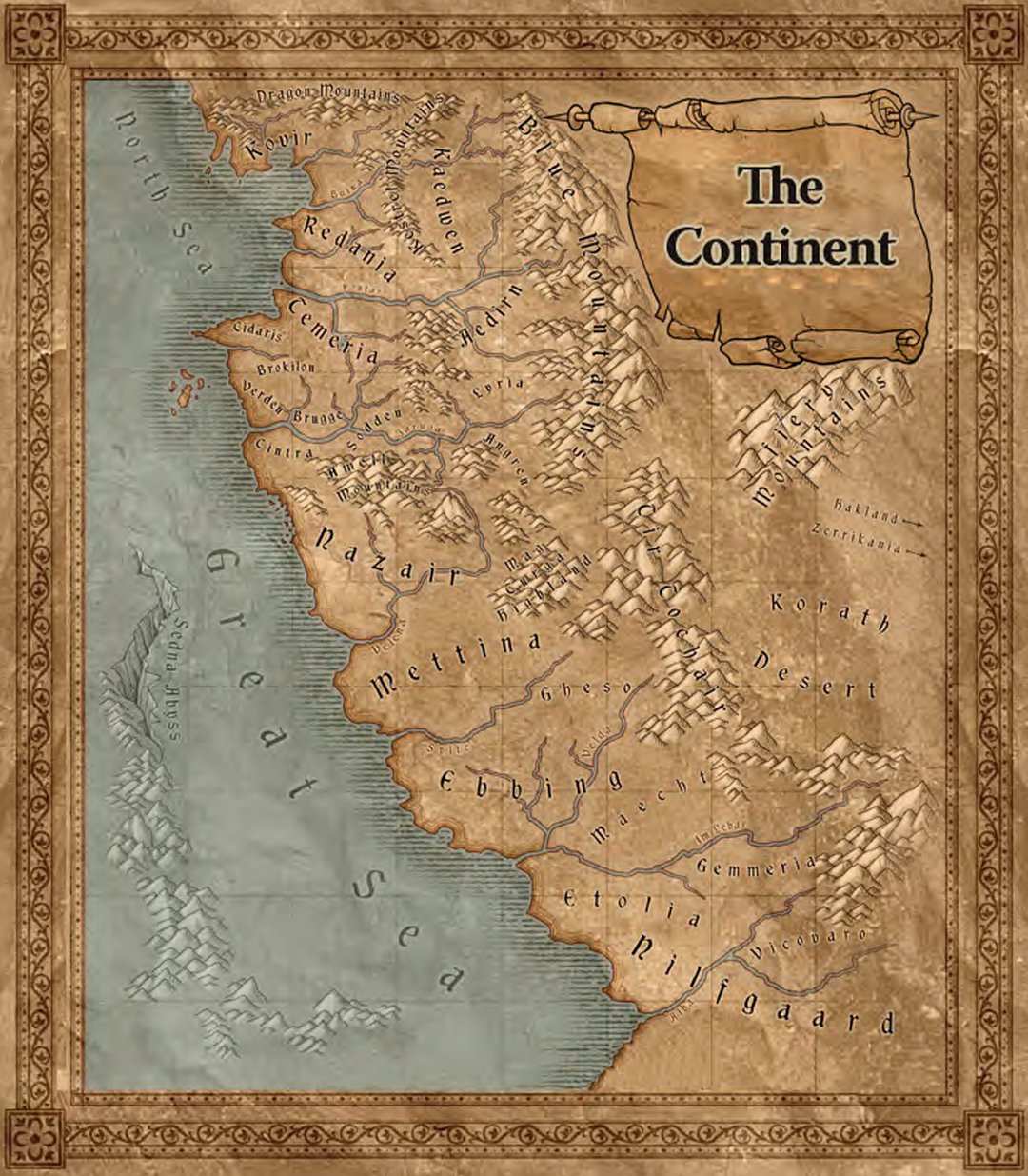
There are multiple maps in the book to show not only the layout of the lands, but also the topography of politics.
I try to avoid directly comparing one game to another. I believe creative work, as with all art, stands on its own. I believe it takes on new life in the hands of those who receive it, interpretation which is as valid as the intent of its creators. And when we resort to simply comparing one game to another, the new work is diminished, its own creativity stifled by the phrase “it’s like X, but with Y.” But for folks who aren’t already foaming at the mouth over a Witcher-specific setting, there will be the inevitable comparison to the largest, most ubiquitous fantasy setting available in tabletop RPGs.
For folks familiar with D&D, a system that’s the launching point for many on their foray into TTRPGs, there is often a longing for something when they look to branch out. What are they searching for? And what can The Witcher offer them? Let’s get on the trail, shall we?
So what do I tell folks when they ask me, “I love Dungeons & Dragons, but…”
 The Witcher TRPG
The Witcher TRPG
Author: Cody Pondsmith and Lisa Pondsmith
Publisher: R. Talsorian Games
Format: Tabletop RPG
Price: $50 USD, supplements $25 - $35 USD
Copy provided by publisher
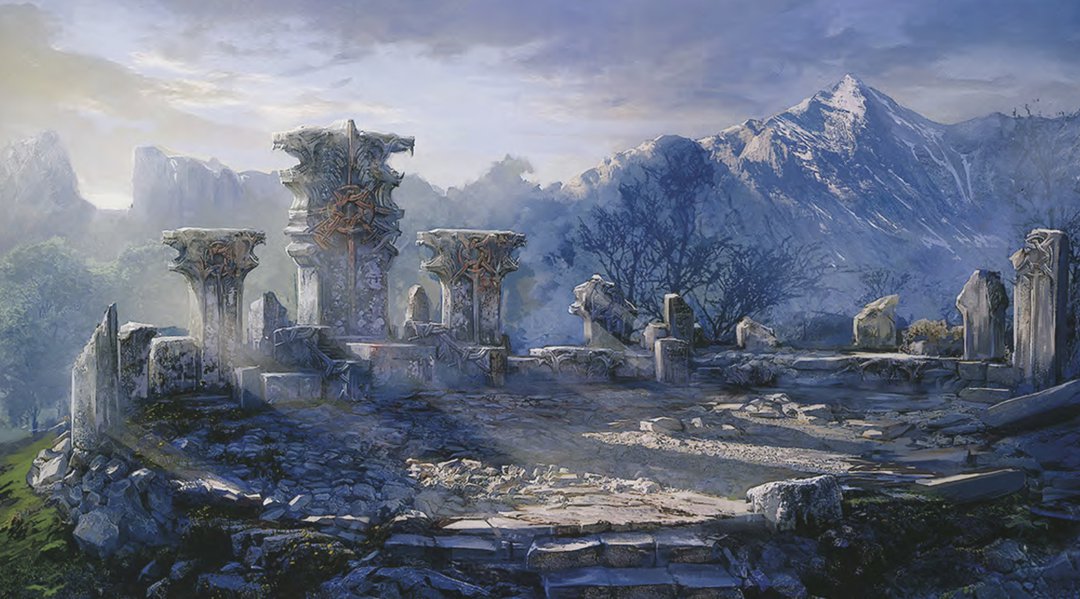
Sometimes danger lurks in the back alleys of a city, and sometimes it lies within ancient locales, long overgrown.
…But I’m Tired Of “Monster Of The Week”
You may have experienced “Monster of the Week” without even knowing what it was. It’s a thing we often see in D&D where the players get together for each week’s adventure, culminating in some kind of new monster boss fight. Every week there will be a new dungeon, a newly afflicted town, another step towards catching the Big Bad, but in all cases there will be a new monster waiting to be slain at the end. It’s a tried and true formula that’s worked across multiple editions of the game over the years, this distinct yet familiar combat encounter we all know will punctuate our play session. But it can leave players wanting for more.
Now, I hear the defense arguments starting up already. If you want a more story-based, combat light game of D&D, you can certainly slant your game in that direction. Any TTRPG can be anything given enough time in the hands of the right dungeon/game master. But play enough D&D and you’ll realize, as we all do, that the mechanics of D&D inherently support a combat-based game. It’s how the game was originally designed, a core it’s kept across all its incarnations, and it’s where 90% of its rules lie. Weapon stats, monster stats, combat spells and abilities, and all the goodies characters get when they level up, most of which are designed to help defeat bigger baddies and level up into even more powerful slayer abilities. D&D spends a lot of its time as a dudes-on-a-map combat game with moments of story and character interspersed between them.
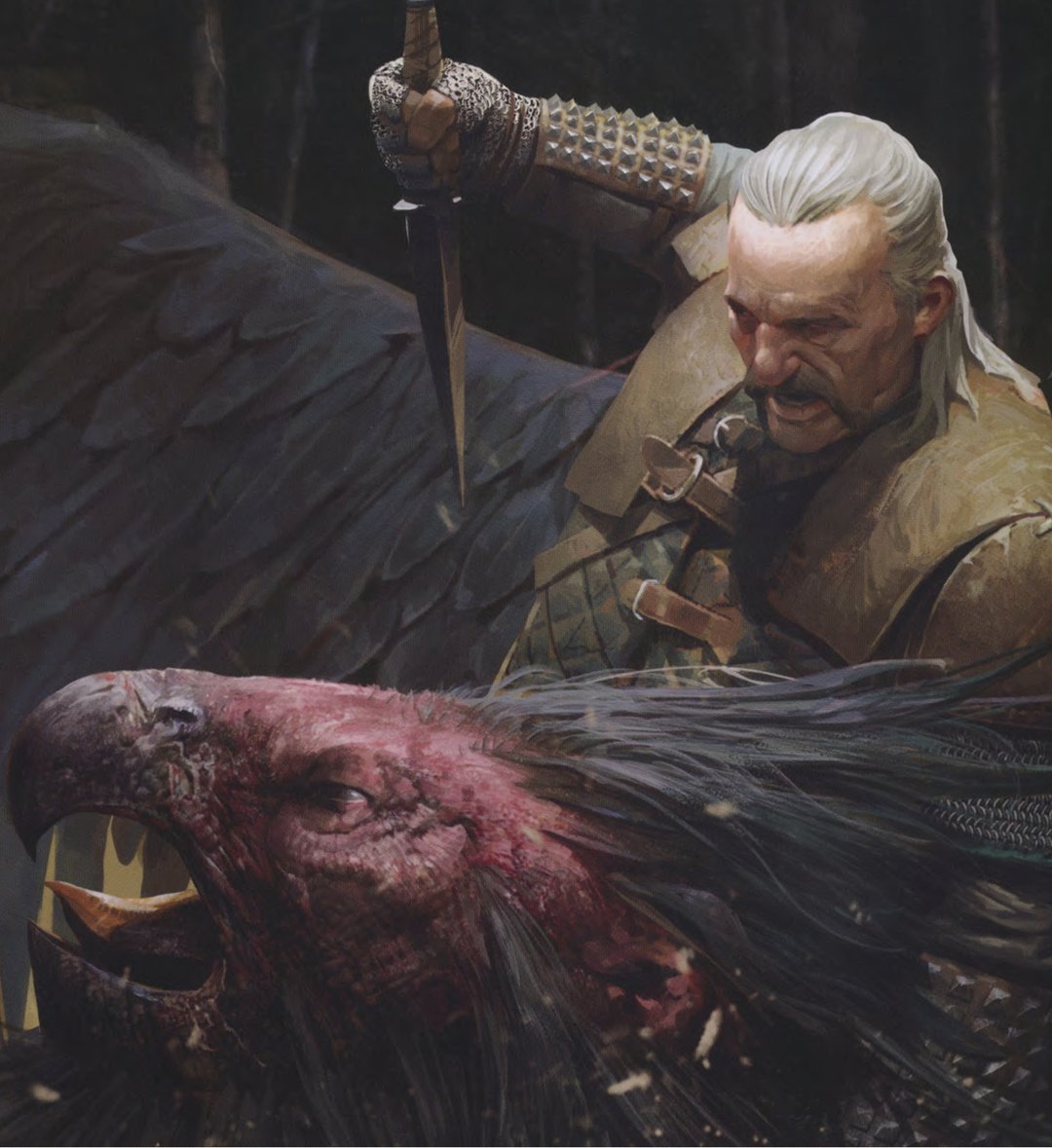
Slaying monsters can be a lot of fun, but sometimes you might want your new conflict to not have a beak or talons.
This section of the review is for any player who’s spent an hour of time loving the roleplay in town only to grow more and more bored waiting between their turns during the 2+ hour combat that ensued later. “How can you honestly be making a case that The Witcher, a setting heavily influenced by killing monsters, isn’t a Monster of the Week game,” I hear you asking already. What makes it different? Well, as with my critique of D&D’s rules and how they inherently support gameplay, The Witcher weaves its sessions along its own lines.
Players who crave more than just monster encounters are looking for plot. They want story development, character development. They want social interactions. Intrigue. They want to relish in the lead-up to the dramatic final encounter. And The Witcher delivers all these in spades, part and parcel of the game mechanics themselves. Monster hunts are never as simple as stumbling into an encounter and fighting your way through them. Any party that does so is liable to come out seriously hurt, if they even make it out at all. Players will need to ask around, look for clues in the area, determine what they’re even up against and what its weaknesses are if they’re to stand a chance in defeating it. For those unfamiliar with The Witcher’s setting, some monsters have very specific requirements in order to take them down. A group might need certain magic, silver weapons, or the knowledge of how to prepare special oils with which to coat a blade to even stand a chance. Some encounters can be defeated without even needing combat in the first place. And this is considering the players are even up against a monster to begin with.

Bumble into one of these and you're likely to end up toast!
There are even greater monsters in the game than monsters themselves. I’m talking, of course, about people. In true Witcher fashion, GMs are encouraged to give players adventures that start out simply enough but turn into something else entirely. “Rid this village of the creature causing people to disappear in the night.” The players set out to track, identify, and defeat an unknown monster only to discover a local mage has been kidnapping folk who stray too far from safety. And what if that mage is trying to contain a new plague that’s befallen the village, both quarantining the afflicted and experimenting with cures on their “test subjects”? There are no easy answers to be found in this world. There may not even be a “good” option between the choices present to resolve the situation. Just a choice of what seems most just or saves the most lives at the time. Or the answer that provides the most profit, should the group be inclined to lean that way.
There is a lot of darker material, a lot of interpersonal, political, and racial conflict in this world, and I will say here that the book does a fantastic job of laying this out for GMs. There are notes for having pre-game sessions where players can specify things they don’t want to see “on screen” in the game. It’s entirely possible to avoid triggering or other sensitive material while adventuring in this setting, fighting against injustices or just to protect friends and loved ones. All of this to say: The Witcher gives a group everything they could ever want if their heart’s desire is a different kind of conflict. One that doesn’t necessarily involve a new boss fight each week. Or at the least, if it does, one that allows players to relish so much more in the lead up. There is a natural cadence to the building up of a climax that feels distinctly Witcher, and that’s not something easily brushed aside.
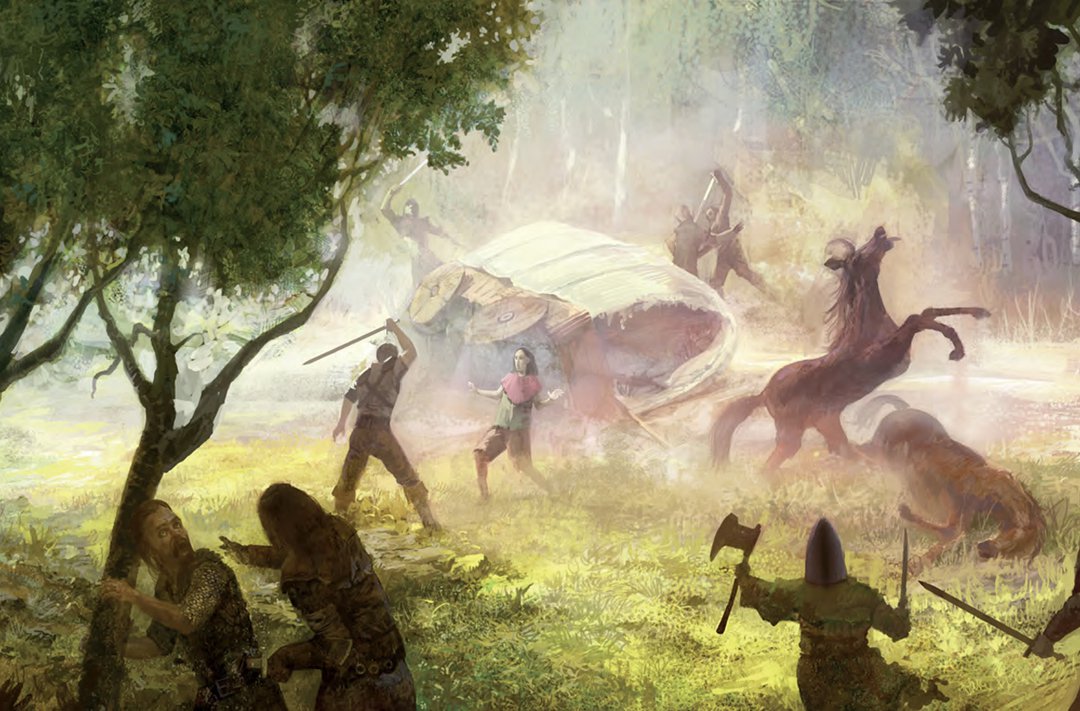
The conflicts that arise between people can often be much more interesting than just tossing a new monster at the group each week.
…But I Don’t Want To Learn A Lot Of Rules
This point, in my humble opinion, we could apply to 95% of non-D&D RPGs. Being everywhere, Dungeons & Dragons is far and away the most learned system when folks choose to play a tabletop roleplaying game. The downside of this, however, is that many players come away thinking that every other system is as hard to learn as D&D. Despite the desire to branch out and try something new, many hesitate out of rules fatigue. Here’s the good news! The Witcher is by far much easier to learn and play!
I did a whole two-part interview with RED’s lead designer James Hutt at the last PAX Unplugged. We discussed, among many things, dice that are fast to learn, faster to roll, and generate results that are easy to read at a glance. Get to the good stuff faster! Go ahead and check out part one and part two if you’d like to read more! The Witcher uses the same d10 system (that is, one ten-sided die) for making skill and combat rolls, and damage is handled by several d6s (six-sided dice). There are several benefits to this system over the d20 system many players are used to.
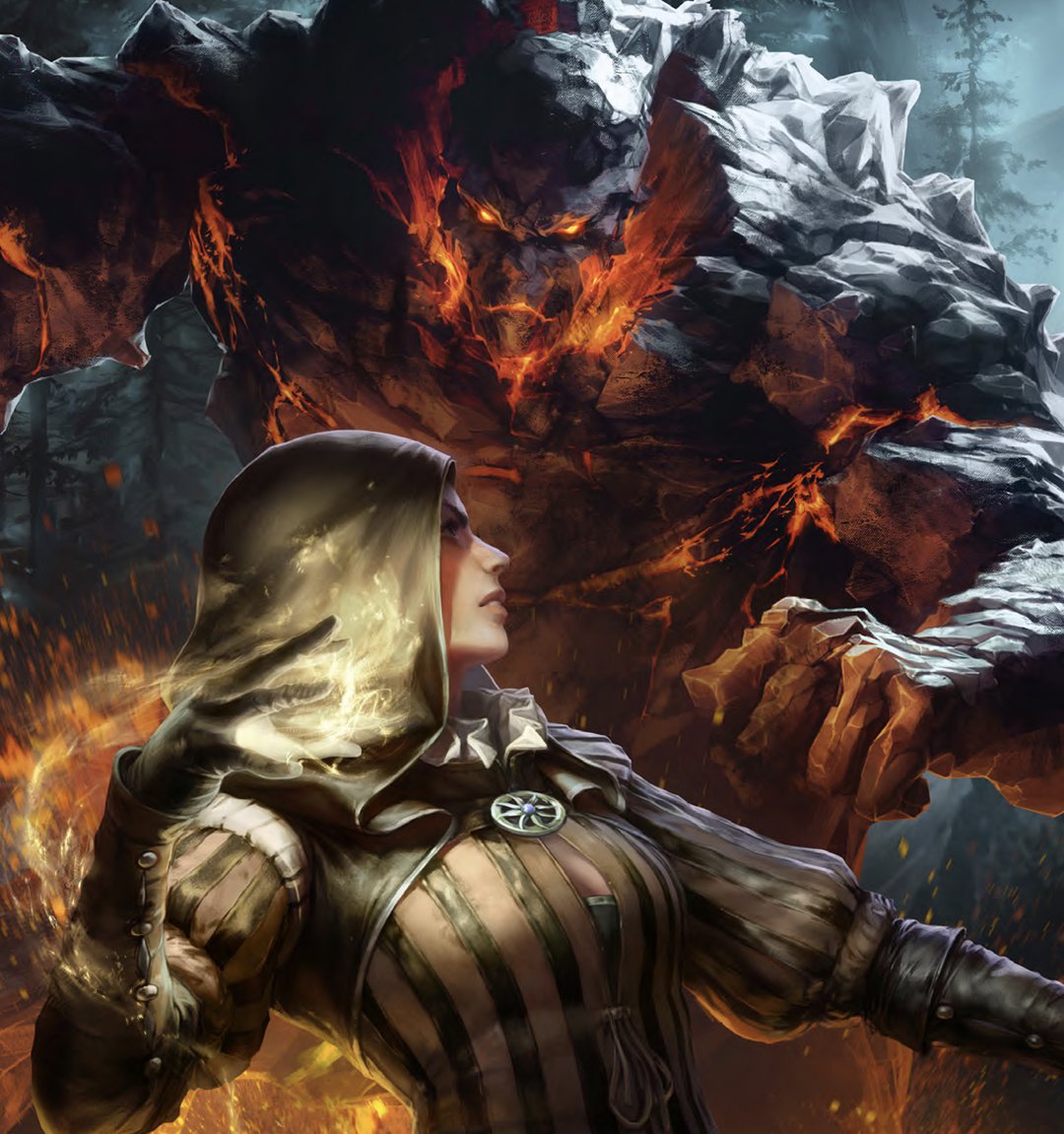
Even the rules for casting magic are pretty streamlined. Magic comes in several flavors, by the way, including mages, druids, and priests.
“What does a 16 mean,” I was asked by James during my interview. The question took me off guard, and I blurted out a what I thought seemed liked a smart answer. He had an excellent point to make: that the good stuff in an RPG is seeing the results of your decisions and getting to the action faster. Few things are worse than looking at a 16 and wondering “did I do well, let me do some math first before I find out.” With a d10 players can see immediately if they rolled well or not, and they have a greater chance of critical successes and failures that punctuate the story with fantastic moments.
A friend and I had a conversation recently on the topic, shedding even more light on the advantages of the dice systems used in Cyberpunk RED and The Witcher. They said that sometime in D&D it felt like, even with full ranks in a skill, the variance on a d20 meant they often failed randomly on rolls as much as they succeeded. Being good at a skill was something he felt should be reflected in the average rolls of a character, and d10s provide a much more consistent curve in that regard. This is all by design, and I could say the same about how the six-sided dice for damage interact with armor and defenses, once again producing consistency and strategy for builds interested in specific combat goals. All while being easier to pick up. Two kinds of dice and a couple different types of rolls. That’s it!
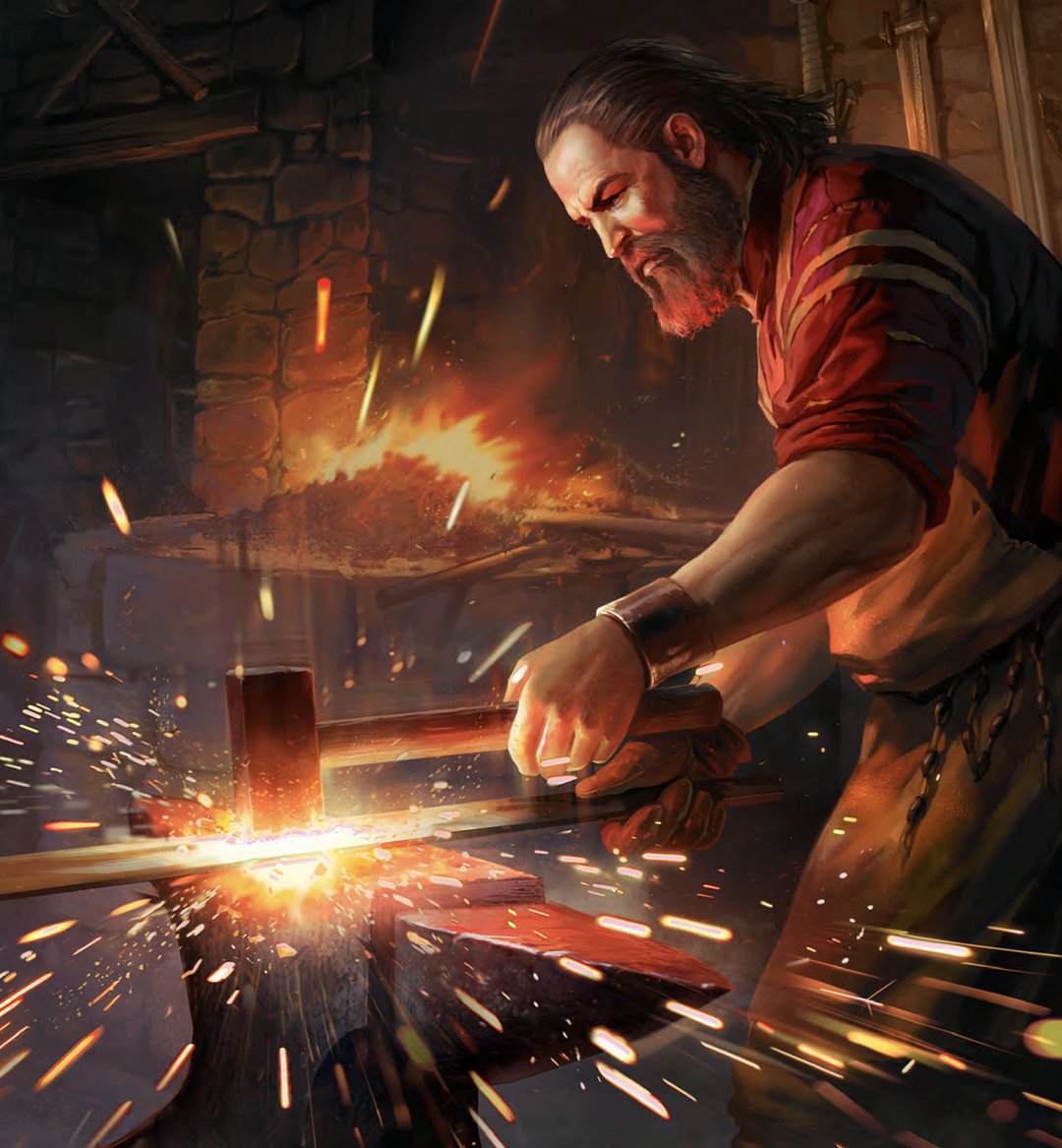
Want to craft things? All you need are ingredients, a schematic, and the relevant skill to roll!
Now it needs to be mentioned that, should you have already looked at Cyberpunk RED, you may be thinking that the mechanical systems from it were exported and applied directly to The Witcher. The dice system may be the same, but the rules themselves have a few quirks that are unique to The Witcher. I mention this because, while RED is far more simple to pick up and play than D&D, the gap is less pronounced if jumping to The Witcher. There are some hurdles that new players may find a bit trickier to jump, particularly when calculating things like armor. This system models the ability for players to, for example, wear chainmail over leather. That sounds great in theory, but in practice you may need your GM to walk you through the calculations. Thankfully, once you’ve got all you numbers nailed down, you have only to refer to them when the action heats up. Prospective GMs reading this review, you will want to make sure you know this particular section of the rules back to front to make things as smooth as possible for new folks.
Combat in The Witcher also models the ability to hit individual locations on an opponent’s body. This means that players will need to get used to making a couple extra rolls in combat over a simple roll to hit. Older Cyberpunk players may recognize something here similar to the prior edition of that game, so while I mention this feature here for the sake of complexity to new players, I also mention it for the sake of lovers of R. Talsorian Games who long for the absences of this feature in the newest Cyberpunk edition. If your priority is mechanics over pure theme, you might be happier here in this setting of steel and magic. The Witcher also packs a system of charts for critical fumbles, if you miss those from Cyberpunk 2020, as well. None of this is to say that the game itself becomes hard to track as the dice begin rolling. While there is no lack of depth for builds, tactics, and being a badass on the battlefield, systems are streamlined here, and GMs or players who just don’t want to bother with the added rolls for hit locations or critical fumbles can just run the system without them (more similarly to the core book from Cyberpunk RED). Easy to pick up, but offering plenty of depth when players are ready to go deeper.
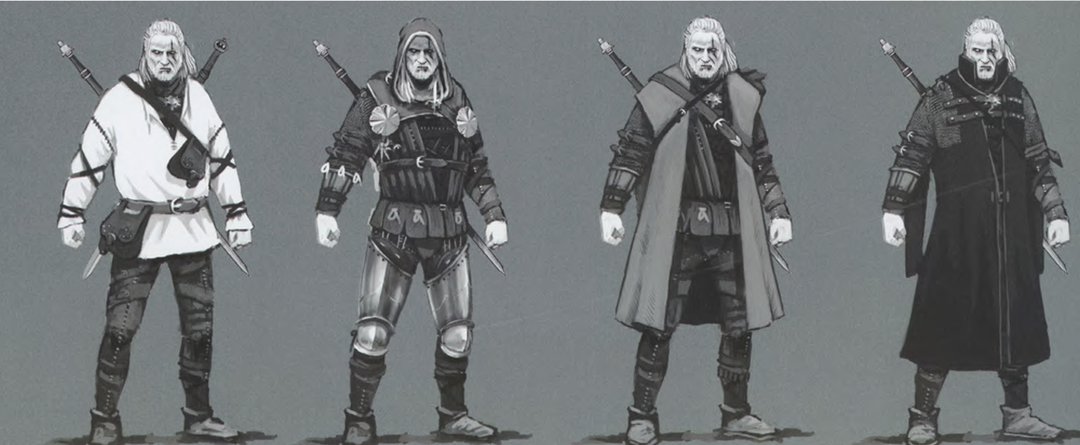
How you set up your armor not only provides needed protection, it gives you an excuse to do one of the most important things in games: fashion!
…But I Feel Confined By My Character’s Class
Listen, I’m just going to be up front on this one. While this point isn’t unique to D&D, it’s very much a part of its DNA. The way the system works, if your character is a wizard, they learn wizard things when they level up, they choose from wizard skills, and they use wizard weapons. If you want to do not-wizard-things, you multiclass your levels into not-wizard. Say fighter. Then you do fighter things with your wizard things. While this makes compartmentalizing everything your character will learn into neat packages, things you can look ahead on charts at, it does also become confining to some players. Everything your character will be able to do is defined by these groupings.
While the solution to this dilemma isn’t uniquely on The Witcher, as there are many different kinds of TTRPGs out there, all offering something different to get creative with, we’re talking about The Witcher specifically in this review. And here is where we discuss the full list of skills being available to every character. Does this mean that classes in The Witcher have no novelty from one another? Does this mean that the world is rife with wacky professionals wielding a seemingly unsorted combination of powers and abilities? Bard with blades? Merchants with magic? Witchers who sing?
Frankly, I’d say maybe to all of the above. Then again, I would argue it depends heavily on how you build such characters. Deep breaths. Let’s have a look together and I’ll show you why this system is amazing if you’ve been looking to branch out your concepts and the stories you want to play.
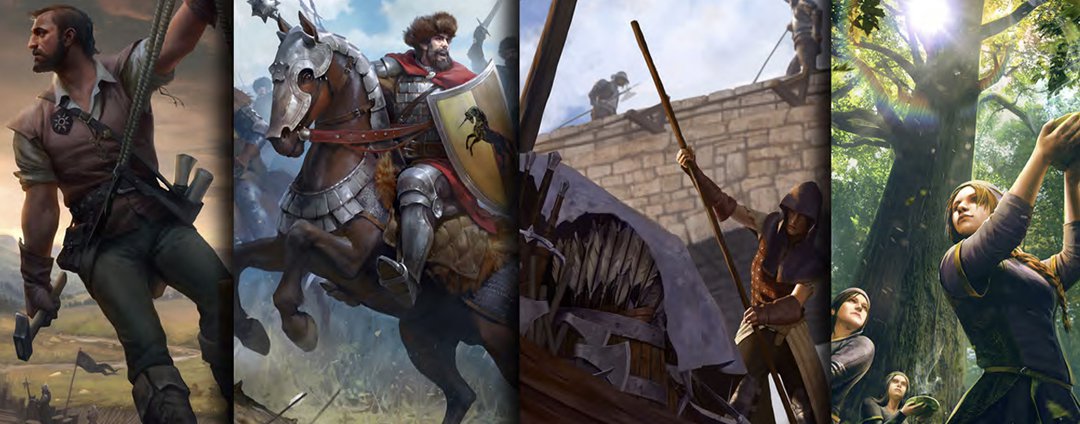
From Criminal to Craftsman, there's something for everyone in choosing your profession.
Let’s say I want to build a magical merchant, a build many might say shouldn’t exist in The Witcher. These are, after all, two distinctly different life paths and sets of abilities. At the heart of the issue are two things: the “defining skill” that your class provides and how you choose to invest your skill points. If you want, let’s say, to build a mage, then you need to take the mage class for its Magic Training skill. No random merchant, no matter how self-motivated, is going to be able to cast magic otherwise. The other half of this equation is how you spend your skill points. The game says you get a handful of class-related skills during character creation that you are mandated to spend a pool of points on; these represent your apprenticeship in your chosen profession. You can spread them around evenly, or you can put the required 1 point in each and dump the rest in a few things you want to be really good at. But skills don’t stop there. This represents only your early training, but not necessarily the skills you perfect as your character lives out their life in-game. The book makes an excellent point that the dwarven character of Zoltan Chivay has knocked plenty of heads in battle but by trade is a merchant and business owner.
While a character’s initial skills are part and parcel of their profession, they don’t define that character. A mage, perhaps fleeing the forced employ of Nilfgaard, might seek a new life for themselves as a traveling merchant in the North. They have only to invest in some Business skill to start them out! Furthermore, for the purposes of any character, as combat is based on skill rolls anyone can become proficient with a blade. Certainly, characters who start off training with a sword will be better using them (such as witchers and mercenaries), but anyone can invest some time and effort into handling themselves in battle.
What this means is that with proper planning, or perhaps a little help from your GM, you can spin all kinds of interesting character concepts. A blacksmith bard or a musically talented witcher aren’t totally off the table. This was honestly one of my favorite parts of making builds in Cyberpunk RED and it’s fantastic to see it survive in The Witcher. Are these necessarily the most powerful or optimized builds? Perhaps not, but you might be surprised by just how effective they remain in play while being every bit as interesting as your imagination hopes for. Folks who are always trying strange things with their builds in Dungeons & Dragons will feel right at home here.
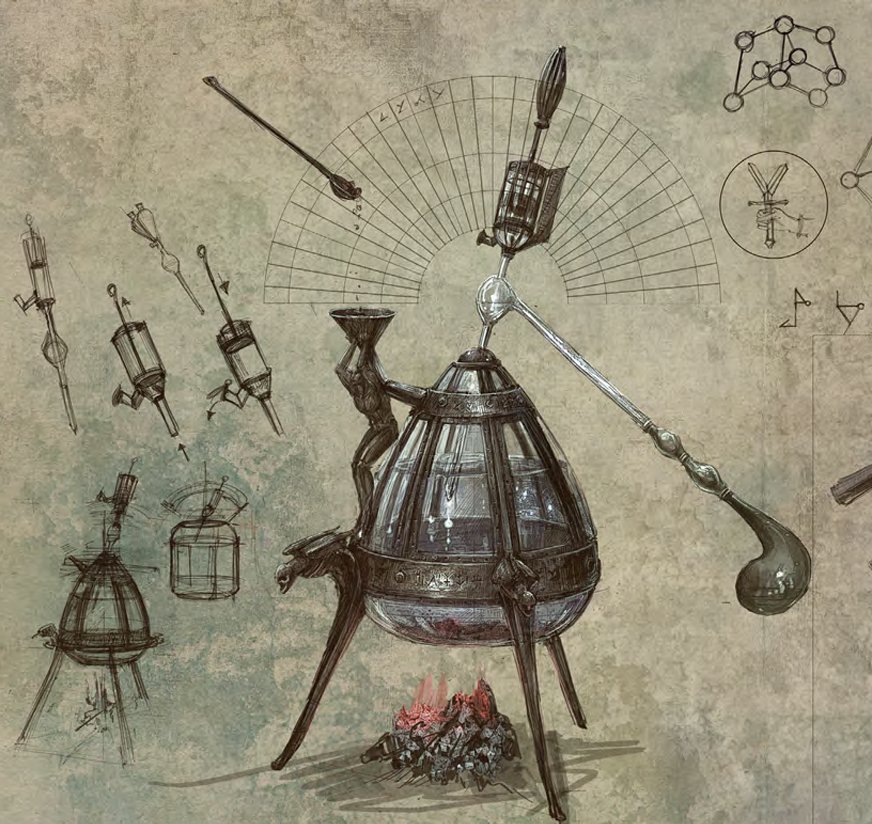
Alchemy is yet another form of craft that gets its own special little minigame...
…But What About All The Things You’re Not Mentioning
There are so many more things about this game that I love, but the review has to end somewhere. So let’s take a few moments to shout out some of the other great feature attached to The Witcher that really stand out.
Firstly, there’s a crafting system in this game that is both streamlined and interesting. It models the crafting system used in the video games, so players will be on the lookout for useful materials and schematics, other loot they’ll take away from random fights or exploring the wilderness. They’ll learn how to craft their own potions and medicines, or maybe they’ll make their own weapons and armor. They might aim to sell these things for profit, or maybe they’ll use them to reach new heights in their chosen profession. The nice thing about this system is that, because it only uses some basic rolls and a known list of materials to be collected, it’s never cumbersome or overly complicated. Finding or buying a new schematic for a goodie you already have half the ingredients to always feels great. It’s a nice little addition I’m glad to see included in the core book.
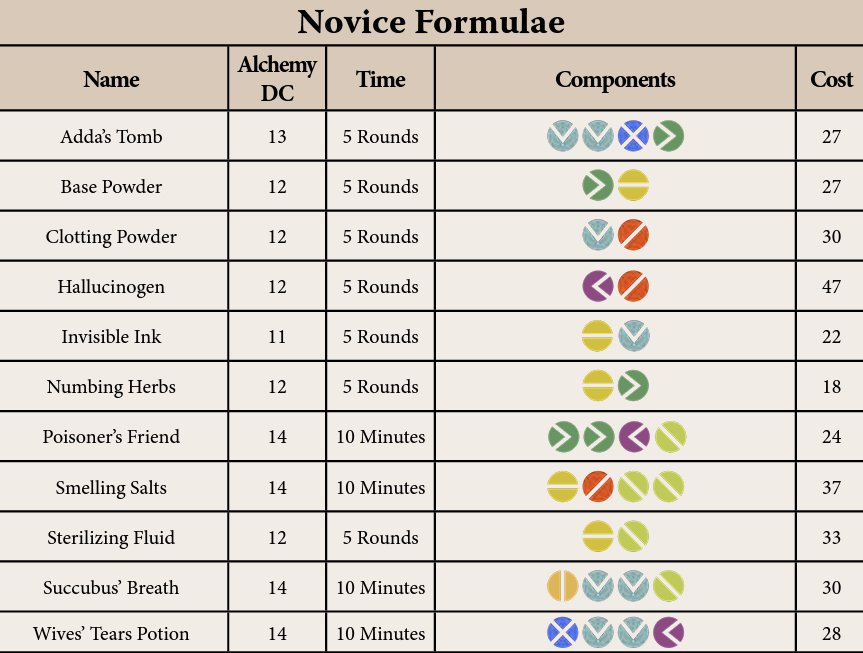
...a minigame in which ingredients count as specific "categories," represented by these symbols, and you mix them to create what you need. You might not have your traditional ingredients where you are, but perhaps a local substitute can suffice!
Speaking of books, there are all kinds of fantastic supplements to mix in with your core copy of The Witcher. Want to run an all-mage game? Or practice Goetia, the study of demonology? Tome of Chaos has you covered! There is of course a Book of Tales if all you want are more adventures to run quickly, and there’s A Witcher Journal for anyone who just needs more monsters. Sure you could make your own, but I consider this one a must have for a setting who’s flavor comes just as much from monsters as the supposed threat of them.
Lords and Lands comes with two fantastic standouts of its own. The first is a GM screen, always a solid addition to any session, enabling what R. Talsorian likes to call “skip the flip,” a quick reference to any rules and charts needed in the middle of play. The second is expanded rules for the Noble profession, allowing them, among other things, to gain their own land and a manor once reaching a certain level. Frankly, and I’m going to date myself here, I haven’t seen this feature included in a TTRPG since the second edition of D&D, and I was always sad it was removed so long ago. A player character having their own estate is a fantastic thing, and players are going to have a lot of fun with it in Lords and Lands. R. Talsorian’s idea to package the GM screen with a whole supplement book, instead of making you buy it separately, is just classy in my opinion. You were going to buy it anyway. Now you get something extra with it!
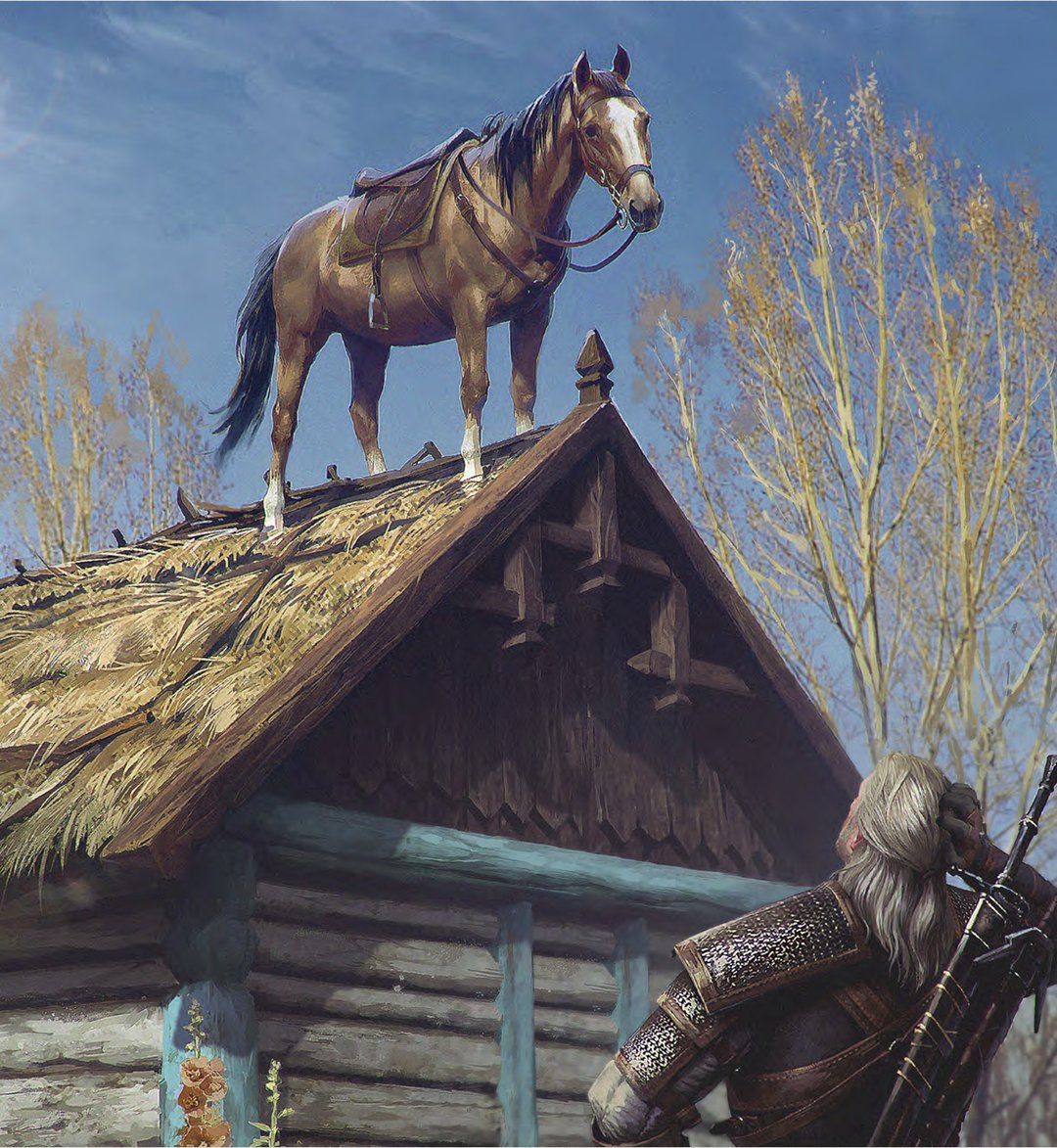
There's no chart in the GM screen for when this happens though. You'll have to fix it on your own.
The Witcher provides a massive map full of adventure for any group of players looking to branch out their fantasy loving TTRPG sessions. R. Talsorian Games has distinguished themselves, in my opinion, as a publisher of games that are overflowing with intrigue, hard decisions, friendship in difficult times, and mystery inherent in nearly every job players will undertake. The core book provides everything players need for many happy hours of gaming, answering the seeking call of many who branch out within fantasy TTRPGs. Whether it’s a system-focused emphasis on out-of-combat roleplaying, a pile of additional book material to supplement the part of the game that most interests you, or just the new puzzle that each investigation provides, there’s something for everyone here. Go heavy with builds or heavy with a thematic character. There’s no wrong way to enjoy this setting! If you’re at all interested in The Witcher or other titles from R. Talsorian Games, I highly recommend you give it a look. You’ll be well rewarded for your time.